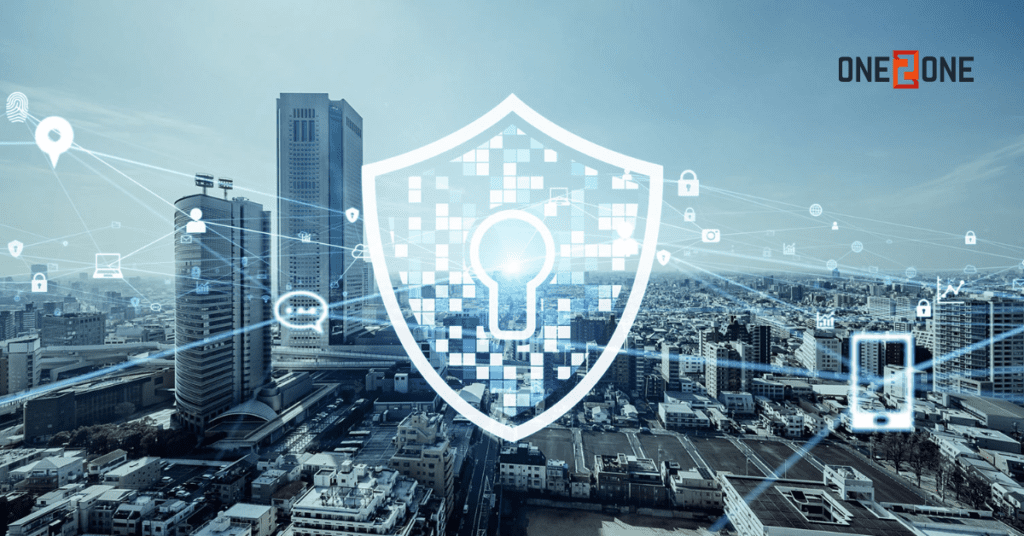
As of November 2022, there were nearly 2 billion websites on the internet. That means there are many opportunities for hackers to scam your employees and many ways for your employees to be distracted. Not including a DNS filtering solution is a considerable cybersecurity risk for your business.
Even if you already have a firewall and use antivirus software, you will want to include DNS filtering. Yes, it’s another security software solution, but it functions differently.
In today’s post, we’ll explore DNS filtering to explain how it functions and why you should be including a solution in your cybersecurity toolkit.
What is DNS Filtering?
Before talking about DNS filtering, we should define DNS. DNS stands for domain name system, and it translates your favorite blog URL into a language your computer can understand. For example, you type in www.myfavoriteblog.com, but your computer will see something like 192.62.63. Another way to think about it is that the DNS is a phonebook, and the DNS filtering is a caller Id.
DNS filtering becomes important because hackers will compromise websites to trick your employees into handing over login credentials. Even with the best cybersecurity training, human error still makes up 90% of cyberattacks. With a DNS solution, you can create a list of malicious sites to block.
Even if your employees are cyber-aware, they might quickly get distracted and wander to Facebook to watch a never-ending loop of cat videos. With DNS filtering, you can create a list of social sites and content that becomes blocked. Doing so will help to keep your employees focused and more productive.
I Don’t Want to Block Content All the Time
No problem. DNS Filtering allows for scheduled block policies allowing employees to access certain types of content at specific times.
How Does DNS Filtering Work?
To return to our phone metaphor, imagine your employee dialing a specific website’s number by typing the URL. A request or DNS query goes from the user’s device to a special DNS resolver server. This resolver step is where the filtering/caller ID action takes place.
The website content will be displayed to the employee if the IP address is approved. However, if the IP address is part of a blocklist, then the employee will receive an error message on their display letting them know that they will not be watching cat videos today.
DNS filtering can blocklist web properties by domain or by specific IP addresses. This blocklisting ability prevents your employees from accessing certain types of content and helps protect them from malware.
How Does it Block Malware and Phishing?
DNS filtering uses a blocklist to help prevent users from reaching not only those cat videos but sites, including malware or a phishing site set up to steal credentials. A blocklist is just what it sounds like; it’s a list of harmful IP addresses.
Blocklists can come from the cybersecurity community, vendors may generate them, or blocklists can combine the two. Some DNS filters will automatically add IP addresses to a blocklist after the page is evaluated and found to have malicious code. A blocklist is also where you can add content you don’t want your employees to see.
One thing to note is that new domains are being added to the internet daily. Cyber criminals generate many of these domains. A DNS filter is a great tool to add to your cybersecurity toolkit, but blocking all IP addresses is impossible.
Will DNS Slow Down My Browser?
Not at all! The query speed of DNS filtering is typically under 10 milliseconds. In most cases, you’ll probably increase web browser speeds for your employees.
What are the Benefits of DNS Filtering for Business?
You might feel overwhelmed with all the security software available and think you don’t need to add another one.
But each security tool has its unique features, and firewalls and antivirus software won’t catch:
When you have a DNS solution in place, it can prevent employees from clicking on malicious links that could destroy your business. It can also stop malicious programs already on your computer from making DNS requests independently. (Yes, that means surfing the web or making calls, so to speak).
I’ve Had the Same Network Setup for Years. Why should I change now?
If for no other reason, consider adding a DNS solution for these two reasons. One is phishing attacks. The second reason is that more employees are working off the company network.
Despite all the advances in cybersecurity, phishing attacks continue to grow at an alarming rate and continue to be a cybercriminal’s best friend. Phishing attacks account for over 80% of all reported cybersecurity events and are nasty. Using a phishing scheme, a hacker can steal business credentials, deploy malware, or infect your system with ransomware.
Outside of phishing attacks, your employees are moving off the network. Over half of all the global businesses operating today offer remote work options. Remote work means that a firewall does not protect your employees, so you need an alternative way to protect your employees and your business. DNS filtering is that way.
DNS is More than Just Security
Content filtering can help your company reach certain regulation compliances.
Still Have DNS Questions?
Making changes can be difficult; we get it. But for businesses with fewer than 500 employees, a data breach from an insider mistake costs $7.68 million. Not to mention that, on average, it takes almost 80 days to contain an incident. Then, what about employee productivity? (Remember the cat videos).
When you sum up the benefits of DNS filtering, you get three core values:
At ONE 2 ONE, we want your business to experience security, visibility, and employee productivity. Who wants to experience the stress associated with a data breach? If you’re considering implementing a DNS solution and still have questions, contact one of our IT specialists today.
Stay ahead of the threats—subscribe to the newsletter.
Essential cybersecurity insights for business leaders, delivered to your inbox.
